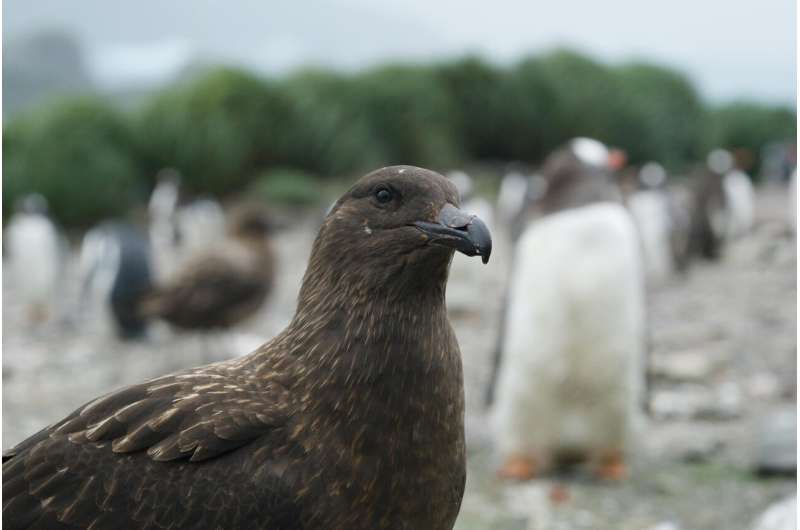H5N1 avian influenza virus found in multiple bird species in Antarctica

A team of virologists with the U.K.'s Animal and Plant Health Agency, working with colleagues from the British Antarctic Survey, the KEMH Pathology and Food, Water & Environmental Laboratory, and the Department of Agriculture, both in the Falkland Islands, has found that the global spread of the H5N1 avian influenza virus has made its way to multiple bird species in Antarctica.
In their paper published in Nature Communications, the group describes how they tested multiple birds for the virus in the region over the years 2022–23 and what they learned by doing so.
The H5N1 avian influenza virus, as its name suggests, infects mainly birds, though it has been found to infect a few mammals, including humans. It was first observed in 1959 and then again in 1997. Early outbreaks were stopped by mass killing of animals in the infected areas.
More recently, infections have become widespread, infecting birds, both wild and domestic, across the globe. Billions of birds have been killed, thus far, and there is no indication that the pandemic is slowing. In this new effort, the researchers have found that the virus has even made its way to birds living in Antarctica—one place on the planet that is generally safe from such outbreaks.
The researchers traveled to several sub-Antarctic and Antarctic sites and tested birds that were living there, finding infected birds in all the places they visited. They also noted that the virus was infecting multiple species, ranging from Antarctic terns, to South Georgia shags, to brown skuas. They also found the virus had infected several marine mammals, such as the southern elephant seal.
In conducting a genetic analysis of the viruses they found, the research team was able to determine that the virus had spread to the sub-Antarctic (likely via migratory birds) from South America, and from there to Antarctica. The team also tested two penguins, one a king and the other a southern rockhopper, and found no evidence of infection.
The research team concludes by noting that it is not yet known what sort of impact the virus is having on bird populations in Antarctica, but that their work highlights the need for more research in the region.
More information: Ashley C. Banyard et al, Detection and spread of high pathogenicity avian influenza virus H5N1 in the Antarctic Region, Nature Communications (2024). DOI: 10.1038/s41467-024-51490-8
Journal information: Nature Communications© 2024 Science X Network
No comments:
Post a Comment